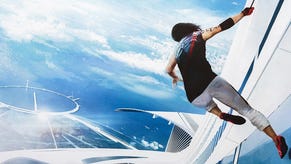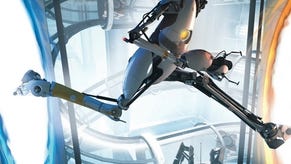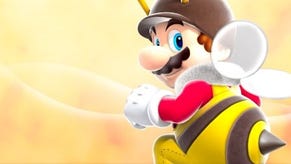Super Mario Galaxy 2
Baby universal.
As before, each Galaxy offers up a couple of varied challenges for stars, and further variations on these - speed and one-shot daredevil runs, and alternate-universe remixes - arrive when a Prankster Comet visits. Their frustratingly random appearances in the first Galaxy are a thing of the past; this time they appear for good as you collect the well-hidden or hard-to-reach Comet Medals. Overall the sequel's is a more manageable and transparent structure that never stands in the way of fun.
If anything, the power-ups are better too. Bee and Boo suits return, along with the venerable fire flower; the Rock Mushroom allows an enemy-squashing, barrier-smashing dash attack (is that a hint of Zelda's Gorons?); and Cloud Mario can conjure three platforms out of thin air with a pirouette. Simplest and best is the drill, which punches Mario through to the opposite surface of whatever he's standing on. You can imagine how well that works with Galaxy's topsy-turvy levels, and it's used with sparing genius.
But the power-ups pale next to Yoshi. Mario's insatiable, irrepressible steed eats up levels as hungrily as everything in them. He has his flutter-jump and a suite of edible power-ups of his own; I'll leave you to imagine what a Dash Pepper, Blimp Fruit or Bulb Berry might do. Using the pointer - which once again allows you to reach into the screen to collect and fire Star Bits, as well as manipulate and bother other bits of the game - you can guide Yoshi's astonishingly flexible tongue to flick out and gobble (or pull, or swing from) anything around you with a tactile snap that's so gratifying it's almost rude.
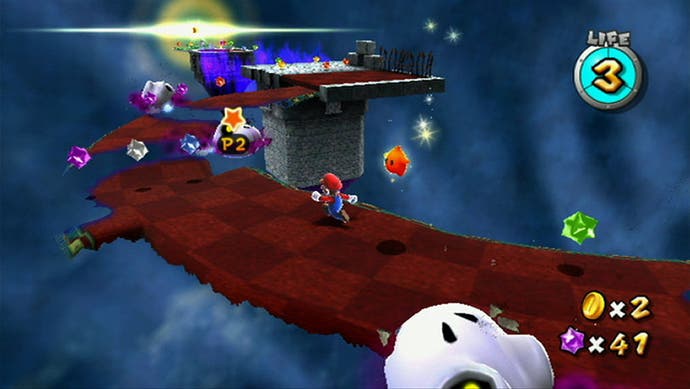
Yoshi's tongue is the highlight of Super Mario Galaxy 2's control and interface feedback which, as ever with Nintendo games, is so polished, rewarding and punchy that it's entertaining in itself. Every detail of interaction tickles your pleasure receptors, from the clunk of a switch to the cheer from the remote's speaker when you pick up every coin in one of its old-school underground coin rooms. The game is an unfettered joy to use.
Mario purists will quibble over the continued inclusion of motion control - as with the first Galaxy and New Super Mario Bros. Wii, a quick flick of the remote is used to extend jumps with a spin as well as execute many power-ups and special moves - but it's been tuned to the point of faultless reliability, immediacy and comfort by now, so I can only suggest they get over it. The pointer's remarkable ability to let you be in two places on screen at once is more than compensation.
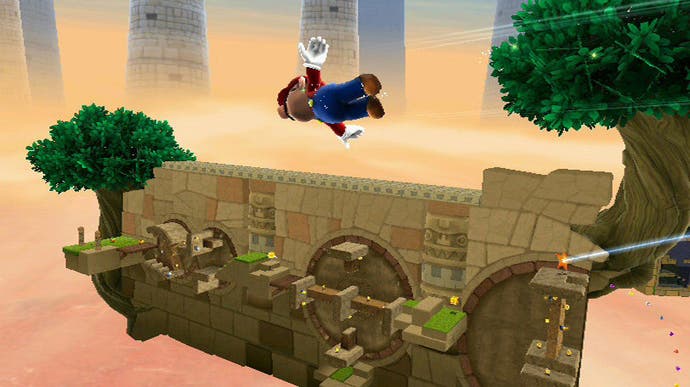
Mario handles more predictably and with a greater margin for error than ever, and although a modicum of finesse has been lost, you simply wouldn't be able to twist your fingers around the conceptual leaps and reversals of Galaxy 2's levels if he wasn't so forgiving. If you feel a little of his old free-wheeling momentum is missing, then (on certain levels) you can opt to use Luigi, who scampers and springs around like a hapless, helter-skelter comic foil to Mario's determined precision. Complete a level with him and you unlock a ghost Luigi to guide you to one of that level's secrets.
Although it's by no means an easy game, it's astonishing how easy Super Mario Galaxy 2 is to enjoy. With multiple gameplay styles and perspectives, and level design so contorted and multi-faceted it's cruel, the camera faces challenges no other game can match, and yet it never puts a foot wrong. The behaviour of the game's gravity and physics can change in an instant, and yet you always instinctively know how to thread our hero through it, that telepathic connection between Mario and gamer as strong as it's been in the last three decades. Despite the loose structure, the pacing is perfect, delivering variety and smooth difficulty on half a dozen fronts simultaneously.

